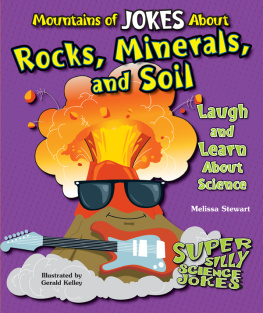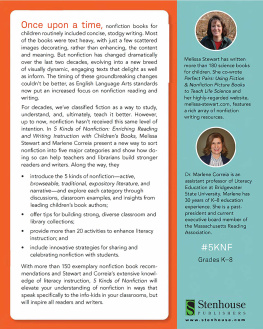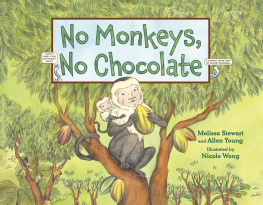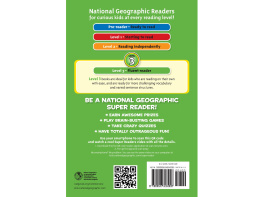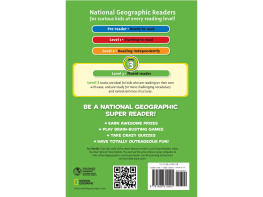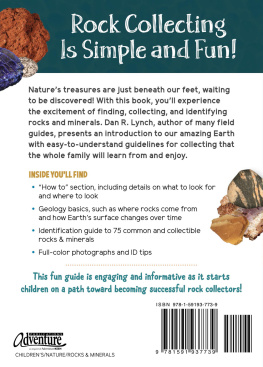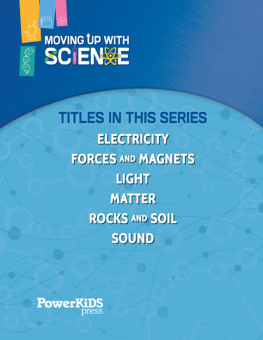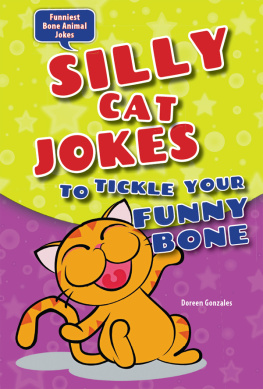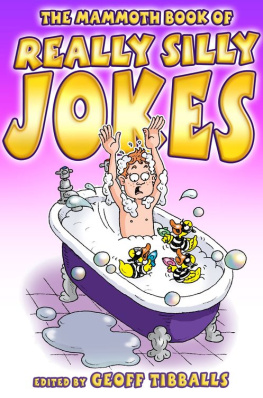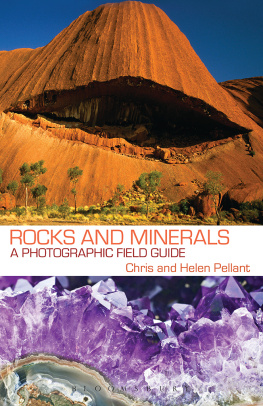WHY DO DIAMONDS ALWAYS DO WELL ON TESTS?
BECAUSE THEYRE SO BRIGHT!
Who said science cant be funny?! Read some fascinating science facts about rocks, including gems, volcanoes, and mountains. Then learn some seriously silly jokes! And the fun part? A section of the book teaches you to write your own jokes about rocks and soil! Get ready to laugh and learn about science.
This series will tickle your funny bone as you learn about all sorts of science as well as get pointers about writing jokes of your own.
Helen Hess, PhD, Series Science Consultant
Professor of Biology
College of the Atlantic
Bar Harbor, Maine
Not only will these books reveal interesting facts and fascinating information, they will actually make readers chuckle!
Allan A. De Fina, PhD, Series Literacy Consultant
Dean, College of Education
Professor of Literacy Education
New Jersey City University
Past President of the New Jersey
Reading Association
About the Author
Trained as both a scientist and journalist, Melissa Stewart is the award-winning author of more than 100 books for young readers. While gathering information for her books, Melissa has explored tropical forests in Costa Rica, gone on safari in Kenya and Tanzania, and swum with sea lions in the Galpagos Islands.
You see rocks around you every day. Theyre under your feet and along the side of the road. Theyre in buildings and jewelry and even chalk.
Rocks are closely connected to minerals and soil. Rocks are made of minerals. And soil contains bits of broken up rock.
As you read this book, youll learn all kinds of cool facts about rocks, minerals, and soil. But thats not all. This book is also chock full of jokes. Some of them will make you laugh out loud. Others might make you groan. (Sorry.) But either way, youll have a good time. So lets rock!

Image Credit: Shutterstock.com

Image Credit: Jaime Chirinos
Q: What did the angry rock say to the sassy soil?
A: Come on! You want a piece of me?
Q: What do rocks eat for dessert?
A: Marble cake.
Q: What did the rabbit say to the rock?
A: Youre too hard to get along with.
Whats a mineral? Thats a good question. Gold is a mineral. So is a diamond. But what exactly does that mean?
A mineral is a natural solid material. But its not alive. And it never has been.
Believe it or not, a mineral has something in common with chocolate chip cookies. These cookie favorites always contain the same mix of ingredients. Minerals do, too.
The atoms that make up a mineral have something in common with the twelve eggs in a carton. The eggs are always arranged in the same pattern. So are the atoms. That means every sample of a mineral, such as gold, looks exactly the sameboth inside and out.
Gold is always made of gold atoms. Diamond is always made of carbon atoms. But most minerals contain two or more atoms. Quartz contains two atomssilicon and oxygen.


Image Credit: Shutterstock.com
Q: Who is a minerals favorite fairy tale character?
A: Goldilocks.
Q: What kind of babies do diamonds have?
A: Carbon copies.
Most of our planet is made of rock. But the planet is not a hard, solid ball.
Earth is made of layers, just like a birthday cake. The top layer is called the crust. Like the frosting on a cake, Earths crust is thin compared to the layers below it.
Next comes a thick layer called the mantle. It contains hot, soft rock called magma. Even though magma is thick, it can flowjust like cooked oatmeal.
Earths sizzling-hot core has two parts. Melted metals slosh around inside the liquid outer core. The weight of all the overlying layers presses the inner cores molecules close together. So the inner core is solid.

Image Credit: Shutterstock.com

Q: What does Earth have in common with a piece of bread?
A: They both have a crust.
Q: What does Earth have in common with an apple?
A: They both have a core.
Would you believe that Earth has something in common with a mug of hot cocoa? Its true.
When you hold a steaming mug of cocoa, heat flows from the chocolate drink to your hands. The same thing happens inside Earth. Heat flows from the core to the mantle.
All that heat warms up the magma at the bottom of the mantle. And that causes the magma to move up toward Earths surface. At the same time, cooler magma sinks down to take its place. Over millions of years, magma slowly circles through the mantle.
What does moving magma have to do with rocks? Keep on reading to find out.

Image Credit: Photo Researchers, Inc.: David Hardy
Warm magma rises up from the bottom of the mantle. Cooler magma sinks to take its place.
Q: Why does magma move in circles?
A: It doesnt want to be square.
Q: What did the mantle say to the inner core?
A: Youre hot stuff!
Okay, lets start off with a joke: What does Earths crust have in common with a dinner table? Give up? They both have plates.
Dont get it? Thats probably because Earths tectonic plates dont look anything like dinner plates. Earths plates are giant slabs of rock. They fit together like the pieces of a puzzle.
Guess what happens to the plates as magma circles through Earths mantle? They go along for the ride. Thats right! The plates move across the surface of the planet. They float on top of the mantle like rafts on a sea of moving magma.
On average, Earths plates move about two inches (five centimeters) a year. Your fingernails grow at about the same rate.

Image Credit: Gary Hincks
The Earths surface is divided into nine major plates. The pink arrows show the direction the plates move.

Q: Why did the North American Plate get in trouble?

